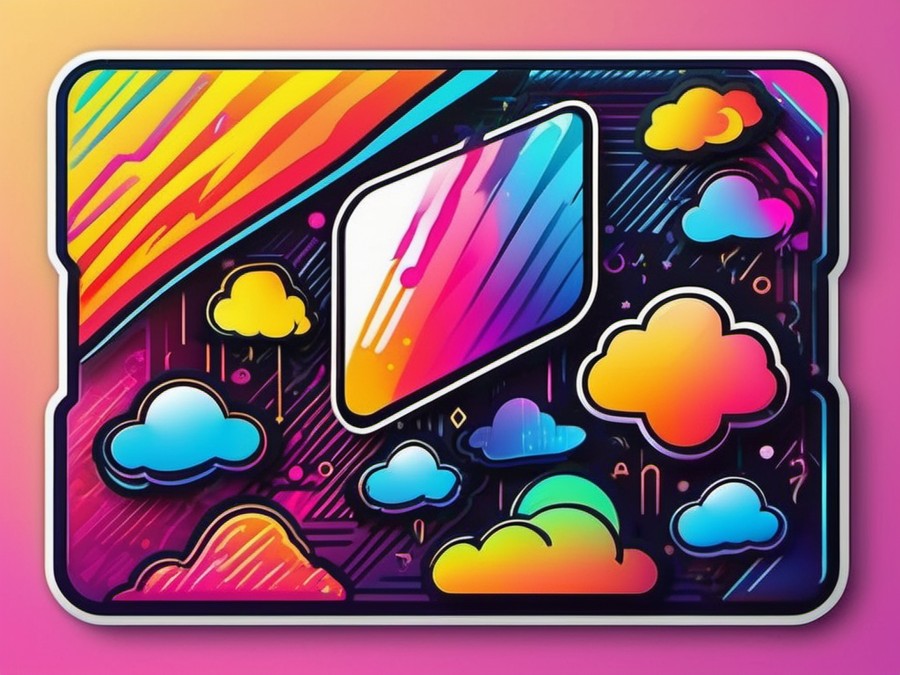· Charlotte Will · Screen Protector Foils · 7 min read
What is the Lifespan of a Typical Screen Protector Foil?
Learn about the lifespan and factors affecting screen protector foils. Discover tips to extend their durability and when it's time for a replacement.

Imagine you’ve just bought a brand new smartphone. You want to keep it looking pristine, so you invest in a screen protector foil. But how long will it last? Let’s dive into the lifespan of a typical screen protector foil, its factors, and ways to extend it.
Understanding Screen Protector Foils
Before we dive into the lifespan, let’s understand what a screen protector foil is. A screen protector foil is a thin, flexible plastic film applied to the screen of your device to protect it from scratches, cracks, and other types of damage.
Types of Screen Protector Foils
Screen protectors come in various types, but the two most common are:
- PET (Polyethylene terephthalate): This is the most common and affordable type. It’s lightweight and offers good protection against scratches but may not stand up to more significant impacts.
- TPU (Thermoplastic polyurethane): TPU protectors are more durable and flexible than PET. They can withstand heavier impacts but may be more expensive.
Factors Affecting the Lifespan of Screen Protector Foils
Several factors can influence how long your screen protector foil will last. Understanding these can help you make the most of your investment.
Material and Quality
Not all screen protectors are created equal. The material and quality play a significant role in durability:
- PET protectors tend to be thinner and cheaper but less durable.
- TPU protectors are thicker, more flexible, and often more durable but come at a higher cost.
- Brand reputation also matters. Some brands are known for producing high-quality protectors that last longer than budget options.
Environmental Factors
From UV light to cleaning solutions, environmental factors can degrade your screen protector over time:
- UV light can break down the material over long periods, making it less effective.
- Cleaning solutions with harsh chemicals can damage the protective coating on the screen protector, reducing its lifespan.
- Extreme temperatures can cause the screen protector to warp or become brittle, affecting its performance.
User Habits
Your personal habits also contribute to the lifespan of your screen protector:
- Regular cleaning can extend the life of your protector by removing dirt and grime that could degrade the material.
- Avoiding excessive force when applying or removing the protector can prevent damage from the start.
- Avoiding contact with sharp objects is crucial to prevent scratches and tears.
Common Issues That Reduce Lifespan
Screen protectors aren’t invincible. Here are some common issues that can shorten their lifespan:
Scratches
How do scratches happen, and can they be avoided? Scratches are one of the most common issues with screen protectors:
- Causes: Scratches can come from keys, coins, or any sharp object that comes into contact with the screen.
- Prevention: Use a case to protect your phone from physical impacts, and handle the protector carefully during installation.
Smudges
Fingerprints are a part of life, but they can also affect your screen protector:
- Causes: Oils from your fingers can leave smudges on the protector, especially if it’s not cleaned regularly.
- Prevention: Clean your screen protector regularly with a microfiber cloth to remove fingerprints and other smudges.
Bubbles
Bubbles under your screen protector can be unsightly and reduce its lifespan:
- Causes: Bubbles are often caused by dust or debris trapped under the protector during installation.
- Prevention: Ensure your screen is clean and free of dust before applying the protector. Use a spray bottle with a mixture of water and dish soap to help the protector adhere better.
Cracks
What causes cracks, and are they preventable? Cracks can render your screen protector useless:
- Causes: Dropping your phone or subjecting it to excessive pressure can cause cracks.
- Prevention: Avoid dropping your phone, and be gentle when handling it to prevent cracks from forming.
Extending the Lifespan of Your Screen Protector Foil
While nothing lasts forever, there are ways to extend the lifespan of your screen protector:
Proper Installation
A good start can make all the difference:
- Clean your screen thoroughly before applying the protector.
- Follow the instructions that come with your protector for the best results.
- Use a spray bottle filled with a mixture of water and dish soap to help the protector adhere better.
Regular Cleaning
Keep your screen protector clean to prolong its life:
- Use a microfiber cloth to remove dust and smudges.
- Avoid harsh chemicals that can damage the protective coating.
- Clean regularly to prevent buildup of dirt and grime.
Avoid Hazards
Certain habits and environments can shorten the lifespan of your screen protector:
- Avoid extreme temperatures to prevent warping.
- Keep your phone in a case to protect it from physical impacts.
- Handle with care during installation and removal to prevent damage.
When to Replace Your Screen Protector Foil
Knowing when to replace your screen protector is crucial for maintaining optimal protection:
Visual Cues
What to look out for in terms of appearance:
- Cracks or chips: If you notice cracks or chips in the protector, it’s time for a replacement.
- Yellowing or discoloration: This can indicate that the protector is breaking down and needs to be replaced.
- Bubbles or lifted edges: These can trap dirt and reduce the protector’s effectiveness.
Performance Issues
When performance declines, it might be time for a replacement:
- Reduced sensitivity: If you notice that your screen is less responsive, it could be a sign that the protector needs to be replaced.
- Scratches: Deep scratches can affect the protector’s ability to provide optimal protection.
- Smudges that won’t come off: If the protector starts to retain smudges, it might be time for a new one.
Screen Protector Foil vs Tempered Glass: Which Lasts Longer?
Comparing the two most common types of screen protectors:
Durability
Which material is more durable? Tempered glass protectors are often considered more durable than foil protectors:
- Impact resistance: Tempered glass can withstand more significant impacts without shattering.
- Scratch resistance: While both types can scratch, tempered glass is generally more resistant to scratches.
- Longevity: Due to its durability, tempered glass protectors often last longer than foil protectors.
Lifespan
How do lifespans compare between foil and tempered glass? The lifespan of a screen protector can vary greatly depending on several factors:
- Material: As discussed, tempered glass tends to last longer than foil.
- Quality: Higher quality protectors, regardless of material, tend to last longer.
- User habits: Proper care and maintenance can extend the lifespan of any screen protector.
For more information on the difference between tempered glass and PET screen protectors, check out our article What is the difference between a tempered glass and a PET screen protector?.
Conclusion
In conclusion, the lifespan of a typical screen protector foil can vary greatly depending on several factors. By understanding the material, quality, and your own habits, you can extend the lifespan of your screen protector and keep your device looking pristine for longer.
FAQs
Your burning questions about screen protector foils, answered:
1. How often should I replace my screen protector foil?
The frequency of replacement depends on the type of protector, your habits, and the environment. As a general rule, replace foil protectors every 6-12 months and tempered glass protectors every 1-2 years.
2. What is the best way to clean a screen protector foil?
Use a microfiber cloth and a gentle cleaning solution to remove dirt and smudges. Avoid harsh chemicals that can damage the protective coating.
3. Can I use cleaning solutions on my screen protector foil?
Yes, but avoid harsh chemicals. Opt for a gentle cleaning solution designed for screens or electronics.
4. Does the brand of screen protector matter?
Yes, it does. Higher quality protectors from reputable brands tend to last longer and provide better protection.
5. How do I know if my screen protector is still effective?
Look for signs of wear such as cracks, chips, yellowing, or reduced sensitivity. Regular cleaning and inspection can help you identify when it’s time for a replacement.
For more specific questions about screen protectors, check out our articles: What is the best screen protector for outdoor use?, What is the Difference Between Matte and Glossy Screen Protector Foils?, What is a privacy screen protector and how does it work?, What is the Impact of Screen Protector Foils on Touch Sensitivity?, What is the best screen protector for curved screens?, What is the Best Method for Applying Screen Protector Foils?, What is the best screen protector for blue light reduction?, and What is the lifespan of open-ear headphones?.




